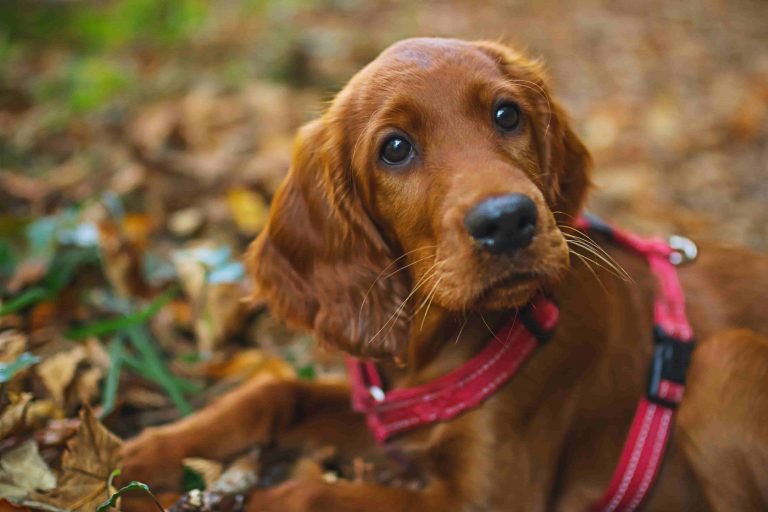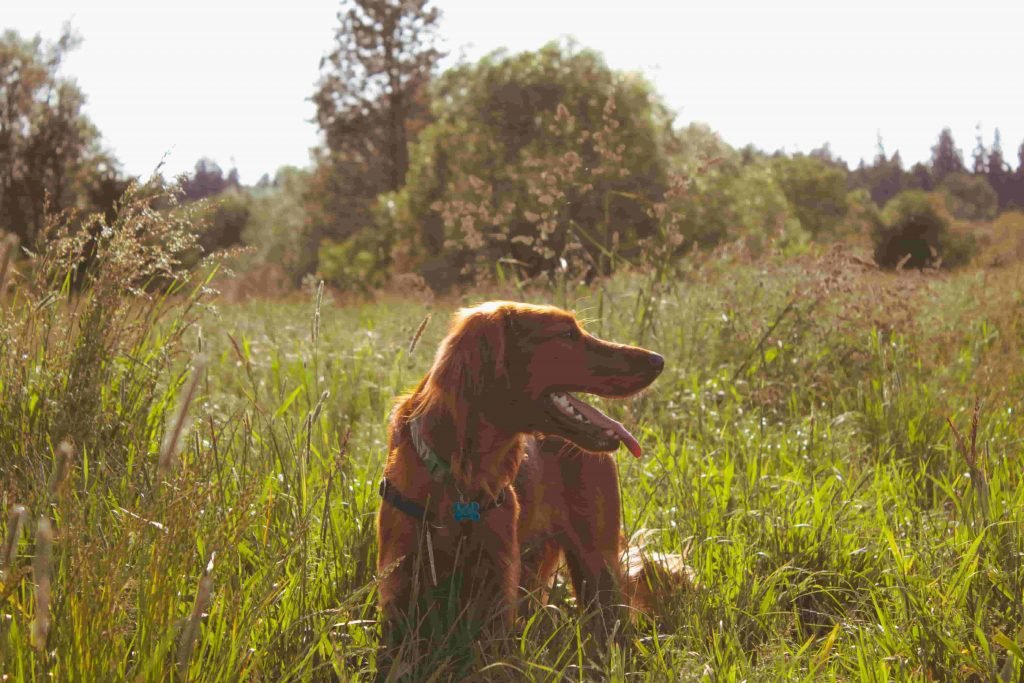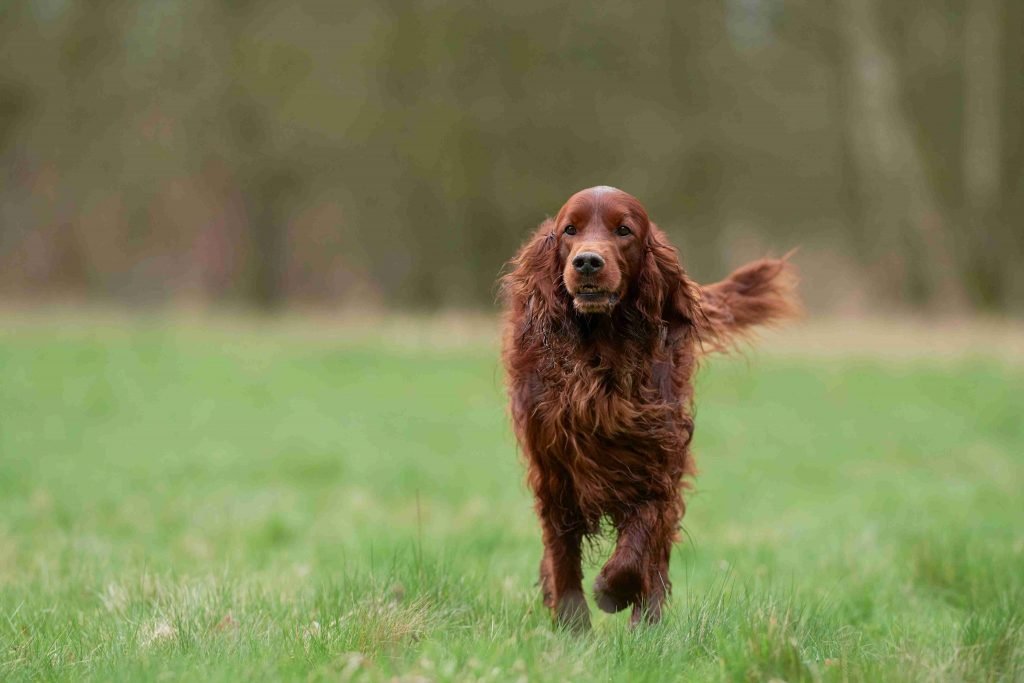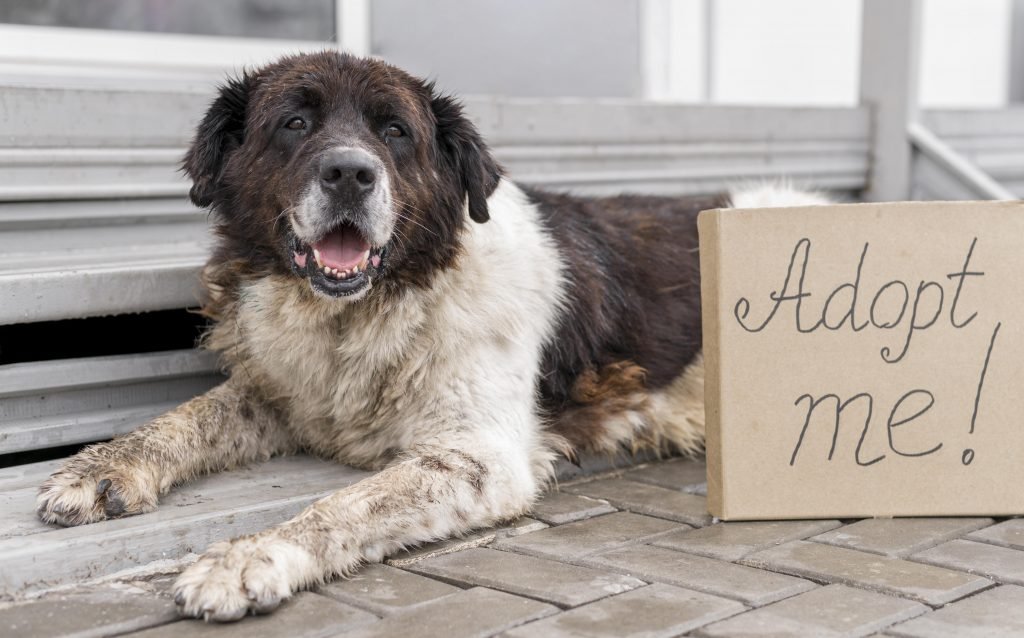Dog blog
Why Irish Setters Breeders Make Great Pets? Let's Find Out
If you’re on the hunt for a new family dog, there are a number of breeds that have surely crossed your mind. For many, when they think about “family-friendly dog breeds,” they think about retrievers like Golden Retrievers or Labrador Retrievers, or perhaps something smaller like a Beagle or Pug.
Irish Setters Breeders make great family pets for a number of reasons, including their great temperament, easygoing nature, and their immense patience, especially when it comes to children.
In my personal experience though, whenever someone asks me to recommend a dog breed that’s suitable for a growing family, I always recommend the Irish Setter.
While not often the top of peoples’ minds when it comes to family-appropriate dogs, the Irish Setters are wonderful family pets.
The Irish Setters Breeders
The Irish Setters Breeders have been around for hundreds of years. They first appeared in, you guessed it, Ireland, in the early 1800s. Initially bred as sporting dogs, they were used as companions on hunting trips and were used to track down birds and other small prey found in the countryside.
Their keen sense of smell, incredible speed, and diligence make them great at tracking down their prey, which is why they are a favorite amongst serious hunters, even to this day.

Irish Setters Breeders Appearance
The Irish Setter is easily recognizable by its long, silky mahogany red coat. Some Irish Setters come with white patterns on their chest and paws, but they are not to be confused with the Irish Red and White Setter, which is a close cousin of the Irish Setter.
According to the American Kennel Club, a fully grown Irish Setter can grow up to:
- Males: 27 inches tall, 70 pounds
- Females: 25 inches tall, 60 pounds
While the Irish Setter’s hair can grow to be quite long and feathery, it is rather easy to groom. Like most hunting dogs, Irish Setters have a double coat, meaning it has a shorter undercoat to keep it warm, especially during the cold winter months, and a longer, silkier topcoat.
This topcoat is what needs a lot of regular brushing and combing to keep it healthy and tangle-free. You’ll also need to clip and trim it every few months to avoid knots from forming.
Because they do have a double coat, Irish Setters do shed, especially during the warmer months. If you’re planning on getting or adopting an Irish Setter, be prepared to vacuum your home a lot, and stock up on lint removers.
This may not be the dog for you if you’re allergic to animal dander or have allergies that are triggered by fluff.
Irish Setters Breeders Temperament
Don’t let their history of hunting scare you off, though! Despite their background as sporting dogs, Irish Setters Breeders are known for their sweet temperament.
They are big balls of energy who love to just goof off and have fun with their owners. I would even describe my big girl as silly and downright clownish! Something unusual considering how elegant and regal the breed looks.
Be warned, though, that the “teenage” years of the Irish Setter can be quite a handful. This is when their energy really peaks. Expect this to happen between ages 2 to 5 but it really depends on your dog.
I found that adding in an extra 30-minutes of walking time a day was the key to using up all that extra energy. Don’t forget to train your Irish Setter early on so that it knows its limits and boundaries!
Irish Setters are also great with kids as they are incredibly patient. Just remember they do weigh between 60-70 lbs., so they may knock over smaller kids by accident.
Exercising Your Irish Setter
Because it was initially bred to be a hunting dog, Irish Setters are used to a lot of exercise and time outdoors.
They are a very active breed who loves to run around, play fetch, chase smaller creatures like squirrels, and just have a good time in general! This playful and friendly demeanor carries over well into their adulthood, so it’s like having a giant puppy forever.

If you aren’t patient enough to give your dog daily walks (sometimes even twice a day) or can’t be bothered to deal with your dog’s hyperactivity, then I highly suggest finding another breed.
Irish Setters that don’t get ample exercise will get bored and may take it out on the furniture, so be warned.
Socialization Your Irish Setter
Irish Setters get along well with both humans and other dogs, which is why they’re considered one of the 10 best dog breeds for families.
The Irish Setter has no problem making friends. I have a dog park near my home, so after work, my kids and I enjoy taking our Setter, Maggie, to the park so she can meet up with her doggy friends. This is also a great way for her to run around, explore, and play.
While Irish Setters are not known as being yappy dogs, they do have a loud, clear bark which can help alert you if someone is at the door or on your property. They pretty much fail at being guard dogs, though.
Irish Setters will alert you that someone is at the door, but they will most likely welcome that person in your home with open arms no matter who it may be, be that a friend or an intruder.
Irish Setters love being with their owners and shower their families with a lot of affection. This is not a breed that does well with being left alone.
In fact, Irish Setters are known for displaying separation anxiety (which includes barking, chewing, and varying levels of destructiveness) when left by themselves.
If you travel a lot, work long hours, or are planning on keeping your Irish Setter locked up in a kennel outside your home, then consider getting another breed as the Irish Setter is definitely not the right one for you.
Training Your Irish Setter
Although the Irish Setter can be quite headstrong and is easily distracted by sights, sounds, and scents (they are hunting dogs, after all!), they are one of the easiest breeds to train.
They are highly intelligent and can remember commands fairly quickly. Of the three Setter breeds, the Irish Setter is the most willing to please, so you can rest assured your Irish Setter will do its hardest to make you happy!
When training the Irish Setter, I’ve found it’s best to remain firm but patient with it. Hidden beneath that cool and regal exterior is a big softie who can be quite sensitive, so take it easy with the criticism.
Once they do learn a trick or command, they’ll remember it for a really long time. This can be good and bad.
If your Irish Setter picks up any naughty habits early on, it may be difficult to break them. Or, if you treat your Irish Setter harshly, it may not be so quick to forgive.
Irish Setter's Health Issues
Before bringing home an Irish Setter, it’s important to know about its health, especially about the health issues it may face down the line. One of the most common health issues Irish Setters face is what is called hip dysplasia.
Hip dysplasia is a condition in both humans and animals wherein muscles and tissues in the hip joint weaken. This is a progressive disease, meaning it cannot be cured and it only gets worse with time.
Hip dysplasia affects the dog’s ability to walk and run. While hip dysplasia normally occurs with old age, excess weight can also trigger or worsen the condition.
Hypothyroidism is another condition you should watch out for in your Irish Setter. This condition decreases the normal thyroid level in your dog’s body, causing it to feel fatigued, gain weight, or experience certain skin problems such as dry, scaly skin.
Finally, Acral Lick Dermatitis is an issue many Irish Setter owners have to deal with. Irish Setters with this condition continually lick or bite their skin/fur, especially on the lower half of their bodies. Acral Lick Dermatitis is often caused by anxiety or stress.
Bringing Home an Irish Setter
If you’ve decided on an Irish Setter and you understand all the responsibilities that come with caring for this beautiful breed, there are a number of ways you can go about bringing one home.
- If you’re concerned about training a puppy and going through the rambunctious adolescent years of an Irish Setter, consider adopting an adult Irish Setter from an animal shelter or rescue. When you adopt an adult dog, you already know what you’re getting yourself into. By this, I mean that the dog’s habits, attitude, and temperament have already formed (whether these are good or bad), so you can make a more informed decision about whether or not the particular dog will be a good fit for your family. Keep in mind, though, that Irish Setters generally live only to around 10-12 years of age. So, if you’re adopting an older dog, be prepared to say goodbye to it sooner than if you would adopt a puppy. Also, remember that most ailments pop up in a dog’s older years.
- If you are keen on having a puppy, call and ask around to see which shelters and rescues have an Irish Shelter on hand. While you can purchase an Irish Shelter, you have to be careful about where you source them from. Irish Setters bought from pet stores, online (from an online marketplace or classified ads), or the like will often have a lot of health defects due to the poor conditions they were bred and raised in. If you want a healthy puppy with as few negative traits as possible, it’s best to go straight to a reputable breeder, although this will cost you an arm and a leg.




